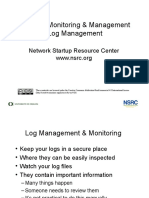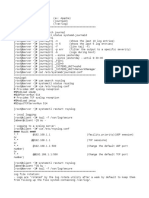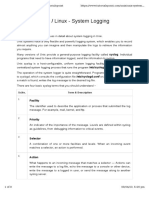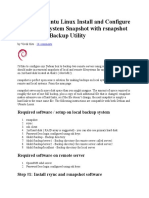0% found this document useful (0 votes)
18 views7 pagesHow To Set Up Remote Logging On Linux Using Rsyslog
This document provides a comprehensive guide on setting up remote logging on Linux using rsyslog, detailing the installation, configuration, and management of log files. It emphasizes the importance of having a dedicated log server for better security, performance, and log management. Additionally, it covers system logging fundamentals, log file inspection, and the use of utilities like logrotate for efficient log file management.
Uploaded by
xxwrld3Copyright
© © All Rights Reserved
We take content rights seriously. If you suspect this is your content, claim it here.
Available Formats
Download as PDF, TXT or read online on Scribd
0% found this document useful (0 votes)
18 views7 pagesHow To Set Up Remote Logging On Linux Using Rsyslog
This document provides a comprehensive guide on setting up remote logging on Linux using rsyslog, detailing the installation, configuration, and management of log files. It emphasizes the importance of having a dedicated log server for better security, performance, and log management. Additionally, it covers system logging fundamentals, log file inspection, and the use of utilities like logrotate for efficient log file management.
Uploaded by
xxwrld3Copyright
© © All Rights Reserved
We take content rights seriously. If you suspect this is your content, claim it here.
Available Formats
Download as PDF, TXT or read online on Scribd
/ 7


























































































